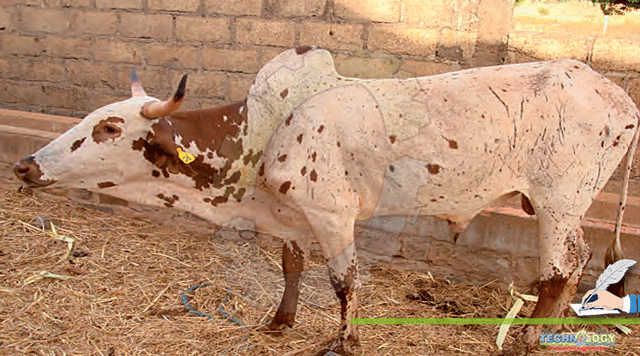CBPP is most economically important disease of cattle in Africa.The direct losses are from mortality, reduced milk yield, vaccine cost, disease surveillance and research program. Indirect losses include loss of weight and working ability, delayed marketing, reduced fertility and loss of cattle trade, losses due to quarantine.

Etiology:
Mycoplasma mycoides subsp. mycoides, Small colony type is causative agent of this disease in cattle. The organism belongs to mycoides cluster, pleomorphic and contain six important mycoplasma of ruminants.
Transmission:
Transmission occurs from direct and repeated contact between sick and healthy animals.The main route of infection is by inhalation of infective droplets from either active or carrier cases of disease . Spread of disease may also occur by discharges from local tail lesions resulting from vaccination with virulent culture. Placenta and urine can also remain infective for long periods.
Pathogenesis:
The organism invades the lungs of cattle and causes a mycoplasmemia, and localization in other numerous sites including kidney and brain resulting in high morbidity and mortality. Thrombosis in pulmonary vessels probably prior to development of pneumonic lesions. Death occurs from anoxia and presumably from toxemia.
Clinical signs
Considerable variation in severity of clinical disease from hyperacute to acute to chronic and subacute forms.
Acute form. Hyperacute form
Sudden onset of high fever. Affected cattle may die within one week after
Fall in milk yield. onset of respiratory distress
Anorexia, disinclined to move
Cessation of rumination
Coughing at first only on exercise
Standing with elbows out
Back arched and head extended
Respiration are shallow, rapid and accompanied by expiratory grunting
Edematous swelling of throat and dewlap
Chronic and subacute forms
Animal may be clinically normal but some inactive sequestrum form in lungs
Chronic cough
Mild respiratory distress on exercise
Diagnosis
Based on history, clinical signs
Isolation of organism(PCR), latex agglutination test
Serological tests: CFT and ELISA.
Differential diagnosis:
Rinderpest: Erosive stomatitis, dysentery and erosion throughout GIT.
FMD: salivation, lameness, fever and vesicular stomatitis.
HS: Acute disease with death in 6 to 72hrs, edema of neck and brisket, lung lesions similar to CBPP.
Pulmonary abscess: large abscess containing foul smelling purulent material, may have total destruction of lungs.
Treatment
No therapeutic treatment is effective, antibiotics have no role in its eradication either at farm level, nationality and internationally, only alleviate clinical course of disease.
Tilmicosin and danafloxacin have been to be effective both in terms of mycoplasmastatic and mycoplasmacidal activity.
Control:
The disease can be controlled by three essential control approaches:
1) vaccination (immunization with attenuated vaccine T1/44 strain).
2) Treatment
3) movement restriction( disease is eradicated by quarantine, blood testing and slaughter).